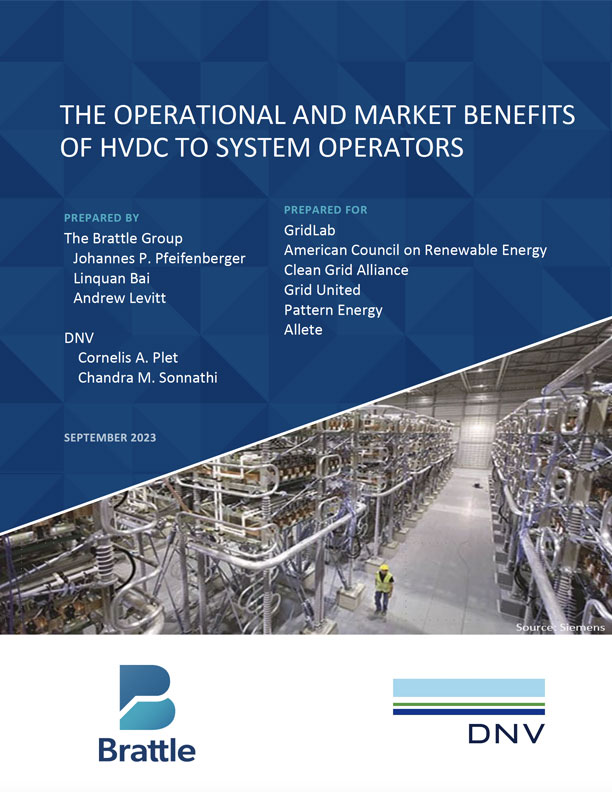Projects

Since the completion of the first large-scale U.S. high-voltage direct-current (HVDC) transmission line (the Pacific Intertie) in 1970, HVDC technology has evolved dramatically. Today, HVDC transmission is playing a critical role in grid modernization efforts around the world. However, the U.S. is lagging behind in deploying HVDC lines, despite the need to dramatically expand the nation’s grid to efficiently move low-cost power long distances to meet increased demand and ensure reliable power supply.
This new report (1) explains and summarizes the capabilities of HVDC transmission technologies, (2) reviews the operational experience that has already been gained with modern HVDC technologies, and (3) summarizes the planning, operational, and market benefits that these technologies now offer to regional power system operators. System operators new to HVDC transmission are able to take advantage of this substantial body of planning, project development, and operating experience. The information provided is meant to facilitate unbiased consideration of modern HVDC technology whenever it can address transmission needs more effectively, avoiding the often implicit preferences for “traditional” but less effective transmission solutions. Yet, to facilitate the adoption and full utilization of modern HVDC transmission technology, a number of misconceptions and challenges must be addressed.
This report was prepared with funding from GridLab, the American Council on Renewable Energy (ACORE), the Clean Grid Alliance (CGA), Grid United, Pattern Energy, and Allete.

